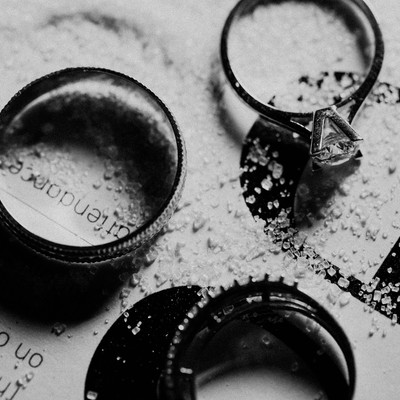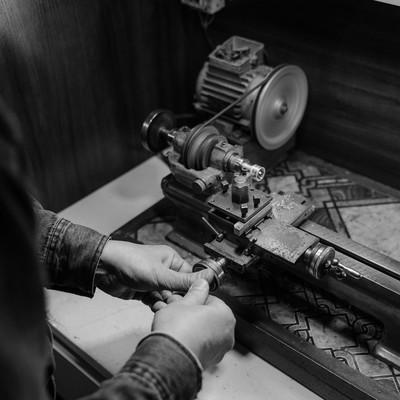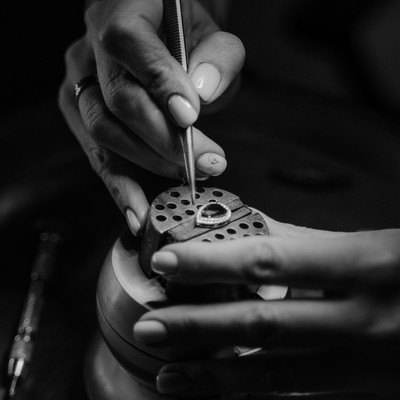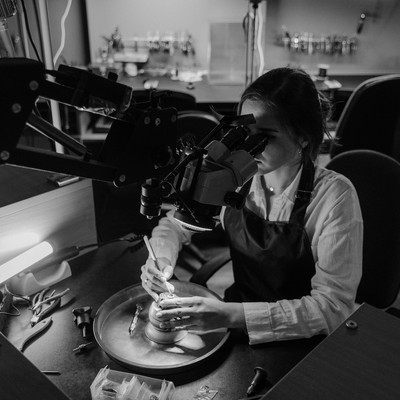Enjoy your gold, silver and gemstone jewelry for a long time: Information on care and durability
We wear it to complement our outfit. We put it on as an expression of our own unique individuality. And, we look at it to remember certain people or events. We are talking about jewelry. Ideally, each piece of jewelry we love will stay with us for many years. Or, it will even endure through generations. But, in order to make sure that you can enjoy your gold, silver and gemstone jewelry for the longest time possible, you should follow a few care instructions. Another factor with an effect on longevity is the material that was used to manufacture the pieces of jewelry. We have compiled a list of the most basic facts worth knowing in this regard.
The way you wear it impacts its durability
To begin with: Most incidents where jewelry breaks have to do with the wearer or the way they use the chain, earrings or other jewelry rather than being attributable to the workmanship of the jewelry. This is assuming that the jewelry in question is of high quality. Notwithstanding, the ravages of time can - quite literally - leave their mark, e.g. on a gold ring. The first thing you need to know in this regard is that the majority of the gold used for jewelry-making is alloyed with other metals. This is done to make gold more resilient, as it would otherwise be far too weak. However, bleaching agent and chlorine can dissolve these alloys over time – resulting in cracks or deterioration of the solder joints. However, even regular wear and tear can cause a ring that is worn daily to wear thin and, thus, become more susceptible to ruptures. The good news: It is relatively easy for jewelers to fix a ruptured ring.
Materials play a vital role
When it comes to durability, you should - aside from the alloys applied to a piece of gold jewelry - also factor in the different materials in general - both when wearing and caring for your jewelry. At Mevisto, we frequently experience that our customers combine our soft and premium-quality 18-carat pendants with a chain that is made of a harder metal. Wearing metals of different hardness will cause the softer metal - in this case, the pendant - to wear away or even wear through quickly. Another element you should regularly check and apply care to is the combination of metal and gemstone. One of our most popular cuts is “Wild Beauty”. For this cut, we manipulate the shape of the crystal, which forms naturally, as little as possible. Apart from polishing its facets, we allow the gemstone to retain its individual character in its entirety. This model is outfitted with a gold pin that runs through the stone – which is a point of the gemstone that requires special care. This is because the stone is stronger than any metal, which will cause the pin to wear down over time. You should therefore have a goldsmith regularly inspect your piece of jewelry – and especially the pin. Valuable information regarding the durability and scratch resistance of gemstones can also be gathered from the Mohs Hardness Scale. It ranges from 1 to 10, with diamond taking the top spot at 10 and talc ranking last at number 1. It thus categorizes diamond as the hardest material, as it cannot be scratched by any material other than another diamond. Rubies and sapphires like the ones we use at Mevisto are grouped under corundums and rank at number 9 on the scale. They are thus resistant to hard surfaces and retain their radiance longer than such softer minerals as opals or emeralds.
Dos and don’ts in jewelry care
You can further improve the lifespan of your gold, silver or gemstone jewelry by observing the following tips on how to wear and how to care for your jewelry:
- Take off sensitive jewelry before you go to bed: If you wear your jewelry while sleeping, eyelets, settings and closures may become entangled in your bedding, your sleepwear or your hair, while chains and braces may break. Lastly, the setting of a ring may become loose. Snake chains, in particular, are highly susceptible to kinks. The best way to store jewelry is to separate the pieces from one another to avoid mutual scratching and to place them in a location that is airtight and protected from light.
- Avoid wearing sensitive jewelry while engaging in sport: Especially activities that require you to lift, push or slide heavy objects can damage your rings. Meanwhile, the rapid movements you perform during dance workouts, spinning, and similar activities carry the risk of causing your jewelry to tear or tangle.
- Clean your jewelry on a regular basis: Outward impact from dust, sand, soil, lotions, deodorants or sprays can place just as much undue strain on jewelry as sweat and other bodily fluids. Many of these influences act like sandpaper and cause metal to wear thin over time. A mild lye solution or warm soapy water plus an old toothbrush are all you need to clean most pieces of jewelry. Caution: Abrasive agents can damage jewelry! Consult your jeweler if you are not sure which solution to use!
- Have your jewelry inspected on a regular basis: And do not wait until a closure or a settings has already become broken. That way, you avoid the risk of losing one of your beloved pieces of jewelry somewhere on the go. While you are at it, you can combine the inspection at your jeweler with a cleaning. Especially antique jewelry and jewelry you wear all the time should be inspected more frequently.
Care instructions for your Mevisto jewelry
We have compiled for you additional information on the topic of care, especially care for our Mevisto gemstone jewelry, in a dedicated section on our website. Do you have any more questions? Feel free to contact us!




